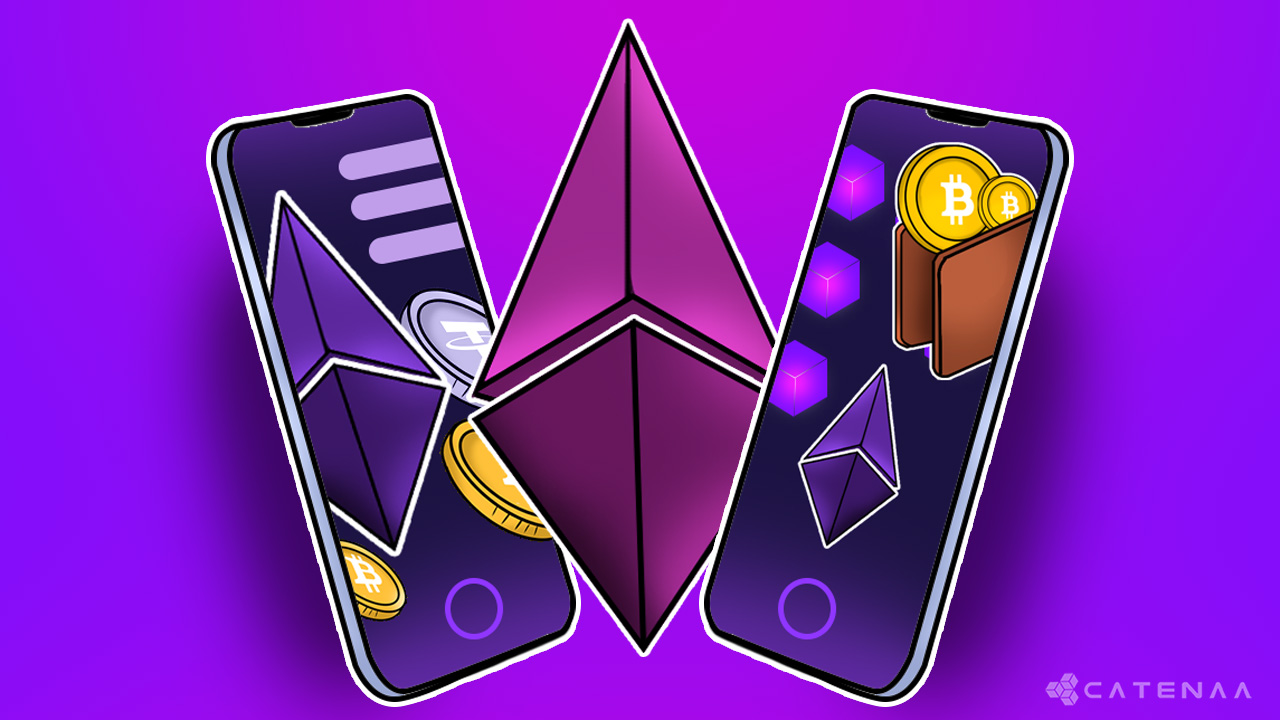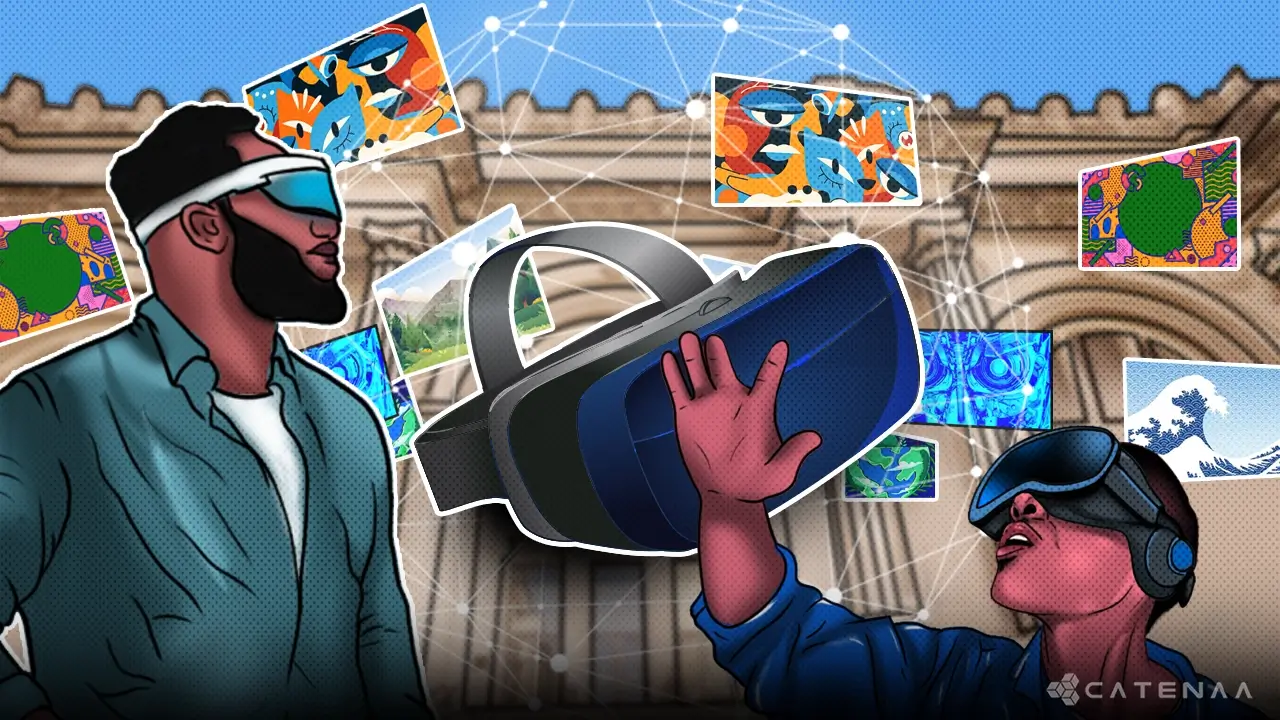Consider a mobile operating system seamlessly integrated with the Ethereum blockchain. This mobile OS grants access to the decentralized web, facilitates cryptocurrency transactions (both sending and receiving), enables the creation and trading of NFTs, and ensures confidential and secure user communication. The Ethereum Mobile OS is an open-source project designed to harness Ethereum’s potential for mobile devices
A clone of Android dubbed LineageOS is the foundation for Ethereum Mobile OS, sometimes called ethOS, an open-source mobile operating system. It is intended to be a crypto-native mobile operating system that enables users to use Web3 technologies and access the decentralized web (without depending on centralized platforms or middlemen)
Decentralized messaging, system-level wallets, onboard light nodes, decentralized payments, and ENS integration are some of the features it offers.
- Decentralized messaging: ethOS uses XMTP, a protocol that allows users to send and receive encrypted messages over the Ethereum network. Users can chat with each other using their ENS names or Ethereum addresses without having to share their phone numbers or personal information. XMTP messages are stored on IPFS, a distributed file system that ensures data availability and censorship resistance.
- System-level wallet: ethOS has a built-in wallet that allows users to store and manage their crypto assets securely. The wallet supports multiple currencies, such as ETH, ERC-20 tokens, and ERC-721 NFTs. Users can also use biometric authentication to sign transactions and access their funds.
- Onboard light node: ethOS runs a light node that connects to the Ethereum network and verifies transactions locally. A light node is a lightweight version of a full node that only downloads block headers instead of the entire blockchain. This reduces the storage and bandwidth requirements of running a node while still providing trustless and decentralized access to the network.
- Decentralized payments: ethOS enables users to send and receive crypto payments using their ENS names or Ethereum addresses. Users can also scan QR codes or use NFC to initiate payments. ethOS supports various payment protocols, such as Raiden Network for fast and cheap off-chain transactions and Uniswap for the decentralized exchange of tokens.
- ENS integration: ethOS integrates with ENS, the Ethereum Name Service, which allows users to register human-readable names for their Ethereum addresses. Users can use their ENS names to identify themselves on ethOS apps, such as XMTP chat or mint app. Users can also resolve ENS names to IPFS hashes, which can point to any content on the decentralized web.
How did Ethereum Mobile OS come about?
Ethereum Mobile OS is a project that was started by a group of developers who wanted to create a mobile operating system that is native to Ethereum and Web3. They were inspired by projects such as Status and Brave Browser, which offer mobile apps that integrate with the Ethereum network and the decentralized web. However, they felt that these apps were still limited by the constraints of the underlying operating system, which is controlled by centralized entities such as Google or Apple.
The developers decided to fork LineageOS, an open-source Android distribution that offers more customization and privacy features than stock Android. They then added various components and modifications to make it compatible with Ethereum and Web3 technologies. They also created their own apps and services that leverage these technologies, such as XMTP chat and the Mint app.
The project was initially called EthereumPhone but later changed its name to ethOS to avoid confusion with other projects that use similar names. The project is currently in the beta stage and has released several versions since its inception in 2022. The latest version is ethOS 2.1, which was launched in April 2023.
How can I install Ethereum Mobile OS?
If you want to try out Ethereum Mobile OS, you will need a compatible device that is OEM unlocked. This means that you can install custom firmware on your device without voiding your warranty or breaking any terms of service. Currently, ethOS supports the Google Pixel 3, 3XL, and 5a devices. However, more devices are expected to be supported in the future.
To install ethOS on your device, you will need to use the ethOS web installer, which guides you through the process step by step. You will need a computer with an internet connection and a USB cable to connect your device. You will also need to back up your data before installing ethOS, as it will erase everything on your device.
The web installer will download and flash the latest version of ethOS for your device. It will also install some essential apps and services that are required for ethOS to function properly. After the installation is complete, you will be able to boot into ethOS and set up your device. 1
How can I develop apps for Ethereum Mobile OS?
If you are a developer and want to create apps for ethOS, you will need to use the ethOS SDK, which is a set of tools and libraries that help you build and deploy Web3 apps on ethOS. The ethOS SDK includes the following:
- ethOS CLI: A command-line interface that allows you to create, test, and deploy your apps on ethOS devices.
- ethOS UI: A user interface framework that provides common components and styles for building ethOS apps.
- ethOS API: A JavaScript library that exposes various functionalities of ethOS, such as system wallet, XMTP chat, light node, ENS, and more.
- ethOS Docs: A documentation site that provides guides, tutorials, and references for using the ethOS SDK.
Benefits and potentials of EthOS
Ethereum Mobile OS is a project that aims to bring the power and potential of Ethereum and Web3 to the mobile space. By using ethOS, users can enjoy the following benefits:
- Privacy and security: ethOS protects users’ data and identities from third-party trackers and hackers. Users can communicate privately and securely with other users using XMTP chat, which encrypts messages and stores them on IPFS. Users can also manage their crypto assets securely using the system-level wallet, which supports biometric authentication and encryption.
- Decentralization and censorship resistance: ethOS enables users to access the decentralized web and use Web3 technologies without relying on centralized platforms or intermediaries. Users can run a light node that connects them directly to the Ethereum network and verifies transactions locally. Users can also send and receive crypto payments using their ENS names or Ethereum addresses without having to use centralized payment processors or banks.
- Creativity and innovation: ethOS empowers users to create and trade NFTs using the mint app, which allows them to mint an NFT instantly from any photo taken with the ethOS camera. Users can also explore and discover new Web3 apps and services using the Three Browser, which supports various protocols and standards such as IPFS, ENS, Web3.js, and more. 1
Conclusion
Developers who contribute to Ethereum Mobile OS have the opportunity to shape the future of mobile blockchain technology. They can actively engage in creating and refining features, improving security measures, optimizing performance, and enhancing the overall user experience. Enthusiasts and users, on the other hand, play a vital role by providing valuable feedback, testing the system, and promoting Ethereum Mobile OS within their communities. This collaborative environment cultivates a sense of ownership and collective progress, leading to a mobile operating system that truly embodies the aspirations of the Ethereum and Web3 communities.
- Ethosmobile: www.ethosmobile.org[↩][↩]


